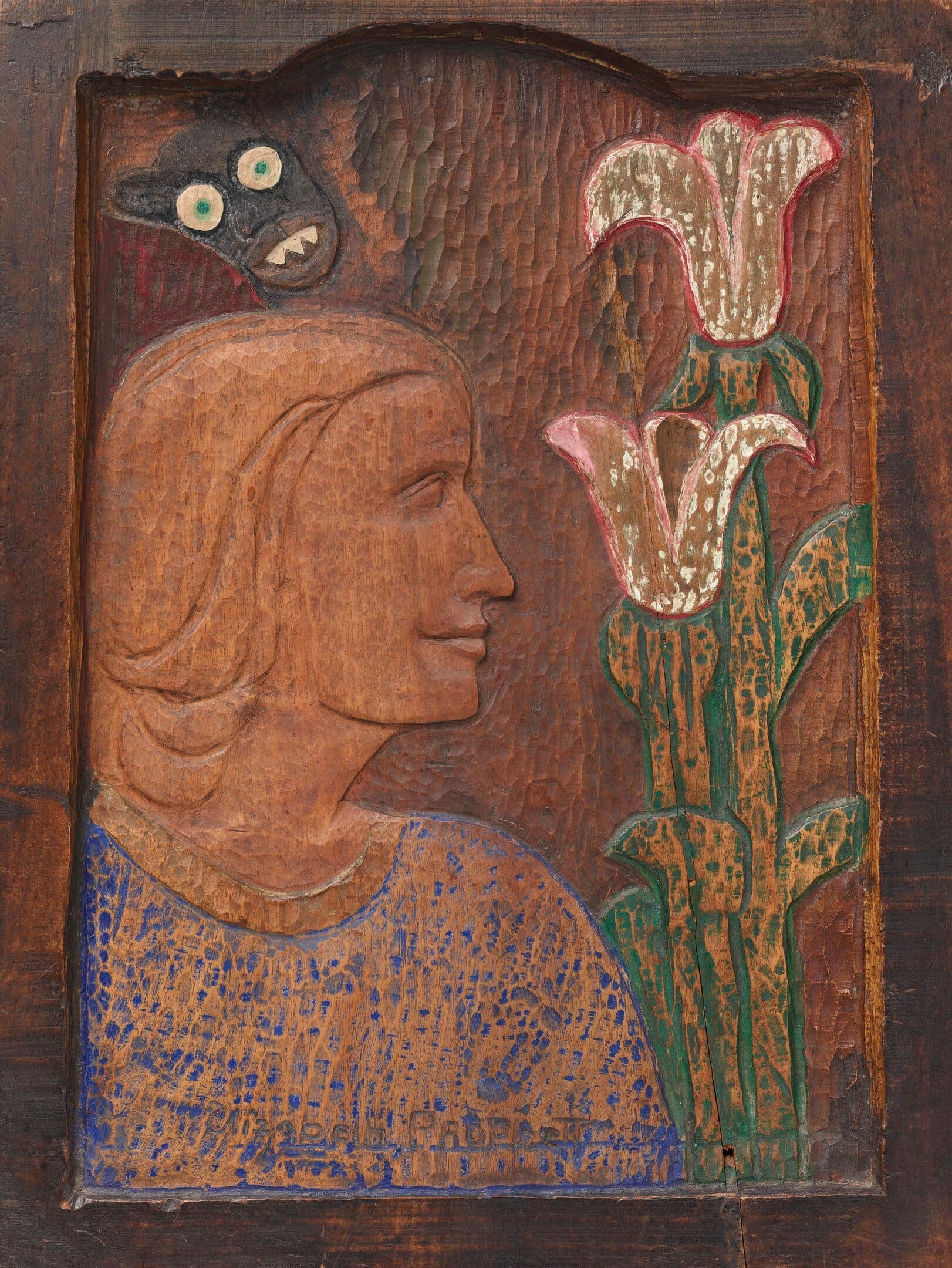BY JAC KUNTZ AND JESSICA MILLER

InKyoung Chun is known for her colorful and narrative watercolor style, but she has been experimenting with new formats and materials — designing houses made of wood, Plexiglas, and even neon that measure from eight inches to eight feet tall. Whether her work is two-dimensional or sculptural, it depicts the intersection of physical spaces and the shaping of mental ones, through both interior and exterior vantage points. A Georgia State University alum and instructor, Chun shows with {Poem 88}, where she will have a solo exhibition in the fall. She’ll also be included in the gallery’s group show “Blue Willow,” opening in March and featuring the work of five Korean-Atlanta transplants. BURNAWAY executive director Jessica Miller and contributing writer Jac Kuntz visited her studio at the Goat Farm Arts Center to talk about her process, her experimentation, and the difficulties artists face trying to sell their work, which has become the catalyst for one of her most conceptual and witty series yet.
Jessica Miller: Tell us what your new work is about.
InKyoung Chun: These days, I am really emphasizing empty space. When painting the positive space, I try to honor the negative space.
Jac Kuntz: In these paintings, there seems to be multiple scenes in a single work, and interior domestic spaces where narratives are suggested.
Chun: Yes, it’s about connecting space—sometimes mental space and sometimes real space. The imagery is based on photographs of my family, and some mark-making is from my imagination. I just start painting and don’t always have a specific plan; I just arrange and rearrange. Sometimes it will start with a random image that is based on my own experience. Some marks are made using masking fluid and masking tape. Then I decide later what I put there. It’s about storytelling, narrative, and composition.

Miller: Are you using images from your own past?
Chun: Yes. My work is about connecting space visually, but also connecting mental space. This one is titled Keep Walking. There are so many things going on. The approach is the same: collecting random photos from my life and rearranging them.
Miller: What’s the nature of these cartoony elements that you’ve been bringing into your work?
Chun: Well, I have two children. They are grown now, but I kept all of my children’s drawings. Those drawings are so genuine; they have power, honest power. I look at work made by the Fauvists or the Cubists, which is extremely crude. Some figures are so flattened they don’t really make sense. Those artists created change because they were tired of naturalism. They tried to give humor, or whimsy, or to offer something different than the traditionally “good looking” painting. And that is what I am trying to do here.

Kuntz: It’s interesting to see both the exterior and interior of these flattened spaces at the same time in your paintings. The imagery is like a cross-section of a home—and then you see the image of the house again in your sculptures which, because it is three-dimensional, you can view from the outside, but then get in close and look inside.
Chun: These house sculptures I have been doing convey me as a homemaker and artist at the same time.
Miller: It is also interesting to compare your house sculptures made of Plexiglas to the wooden houses. The acrylic pieces are sharp and minimal, and then the wooden ones are painted a traditional white and covered in colorful balls of styrofoam. Do you work with Plexiglas much?

Chun: No, I designed the houses and then a friend of mine, Antonio Darden, fabricated them for me. A curator who visited my studio at GSU recommended I try different materials.I designed the clear, Plexiglas model houses because I am interested in the empty, unseen place. Even the white wooden houses are revealing because you can look inside, but not revealing.
I began to make neon sculptures in 2015. I was thinking again about mental space. When I am here, in my studio, caught up in a reading or writing or creating an image, I make up my own mental space. People are always passing through and living in their own mental space. That is why I created this blue, neon archway — you must enter and pass through it to get somewhere. The color symbolizes water and a cleansing.
Kuntz: That is very fitting then that this archway is now at the entrance of your studio — which visitors have to pass through to enter your space. This room is very much a reflection of your mental space.
Chun: Yes, and it was funded by the Goat Farm. I created it for the Creative Loafing Street Party in September 2015.They put it out on the street, near Mammal Gallery, and at night it looked bright and dramatic. It was more public that the art that I usually do. I’ve been trying to experiment with materials.

Miller: What is your newest work?
Chun: The clear, plastic houses are new. I am hoping to make at least twelve of them. They can be freestanding or hang on the wall. And inside of them is a small drawing which is itself a piece of art which makes its own space.
Another new series I have been working on is my Red Dot series, subtitled Buy One, Get One Free. I have many unsold paintings sitting in my studio and sometimes it is really hard to sell a large-scale or dark painting in a commercial gallery, so I scaled those paintings down, drastically, and then showed different versions of them. Artists have to sustain themselves by selling their work. We artists realize that we will sell more when there is a red dot next to a piece on the wall. Gallery visitors may not otherwise pay attention, but then they see the red dot and think, wow, this is really good work. I have actually sold a couple of these paintings so I have tried to make more. This one is Buy One, Get Two Free.

Kuntz: So these Red Dot paintings are exact miniature copies of your larger oil paintings?
Chun: Yes. They are a kind of documentation and, at the same time, a promotion of my older work. They are conceptual pieces, but also a satire of me becoming more of a salesperson. I have to sell… I want to make meaningful work, but I also have to sell to collectors.
Miller: Is it your goal to talk about commerce and the need to sell art to sustain oneself?
Chun: Only partially. My true goal is to make good work, for me. I have to be honest. I don’t make work to please any audience. The work is based on my life and my story. When I make work, I don’t really plan the outcome … it’s about the process. The audience’s taste changes depending on the space—a gallery, a museum, etc. If it sells, that’s great. But when I am working in the studio, I can’t keep in mind someone else’s taste. But I do care—who doesn’t want financial and career success?

Kuntz: How long have you been at the Goat Farm?
Chun: About five years.
Kuntz: You’ve probably seen it change a lot in that time. What is unique about the community here?
Chun: It is different than other studio programs. The people that work here are diverse—chefs, a fashion designer, artists, a playwright, a dance company, some yoga instructors, a construction company, musicians, and architects—so the energy is pretty exciting. And with the café there, I get to meet so many interesting people. The Goat Farm intentionally creates those interactions; they encourage us to dine together. We have a lunch program and Chef David makes some dessert, food, and teas. We can just drop by and hang out.
Kuntz: That’s a great way to build a community.
Chun: Yes, they encourage us to share ideas and use each other as a resource. I appreciate it, even though I don’t go to all of the gatherings. I tend to stay here and work quietly. But they are all very sweet and extremely supportive.




